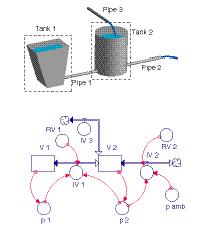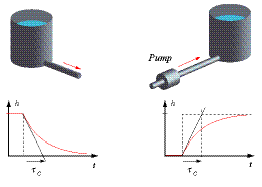CHAPTER 1 > READINGS > A BRIEF TEXT 6
6. Dynamical Models and System Behavior | |
| | |
Causal physical models are answers to the question “why:” Why is a system in a certain state? Why do processes run a certain way? A complete model of systems and processes is simply a combination of all relations—laws of balance and constitutive laws we have collected so far—necessary for a particular example. The purpose of a model is to determine quantities describing a situation at a moment, or to predict the outcome of processes. | |
| |

 1.27
1.27